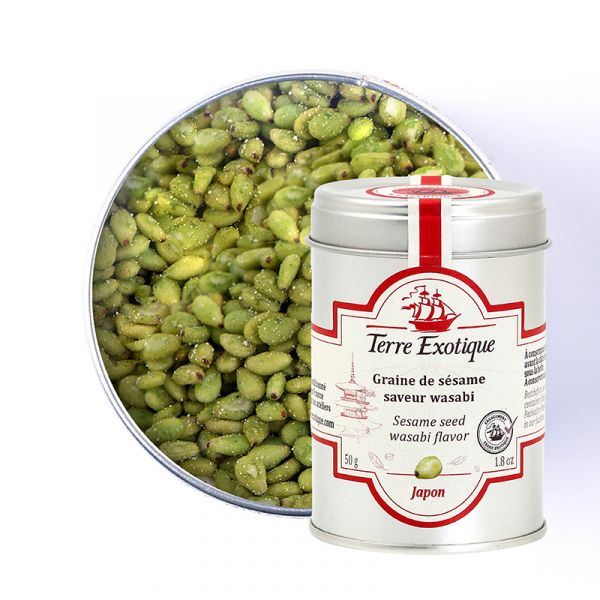
How to Use Wasabi Sesame Seeds?
Essential for adding flair to a simple bowl of rice, a raw vegetable salad, a fish carpaccio, or a dipping sauce.
Recipe Ideas with Wasabi Sesame Seeds
- - Grilled Salmon with Wasabi Sesame Seeds: mix wasabi sesame seeds with soy sauce, honey, and ginger. Marinate salmon fillets in this mixture, then grill them. Sprinkle with additional sesame seeds before serving;
- - Chicken Skewers with Wasabi Sesame Seeds: coat chicken pieces in a soy and honey sauce. Thread them onto skewers, then grill. Sprinkle with wasabi sesame seeds before serving;
- - Wasabi and Sesame Cabbage Salad: add wasabi sesame seeds to a shredded cabbage salad. Make a dressing with wasabi, rice vinegar, sesame oil, and honey for a crunchy and spicy dish;
- - Wasabi and Sesame Dip Sauce: mix wasabi sesame seeds with Greek yogurt and wasabi to create a creamy and spicy dip sauce. Perfect for serving with fresh vegetables or chicken sticks.
Wasabi Sesame Seeds: A Fusion of Spicy Flavors
Wasabi sesame seeds combine the distinct flavors of sesame, with its nutty roasted notes, and wasabi, bringing a spicy heat and herbal nuances. These seeds offer a dynamic taste experience, balancing the sharpness of wasabi with the richness of sesame. Often salted to enhance the flavors, these seeds add a spicy and umami dimension to a variety of dishes.
The Spicy Origins of Wasabi
Wasabi, botanically known as Wasabia japonica, is a plant from the Brassicaceae family. Native to Japan, wasabi grows mainly in humid and shaded environments along mountain rivers. This perennial plant is prized for its fleshy root, the rhizome, which is grated to produce the wasabi paste widely used in Japanese cuisine. Cultivating wasabi is delicate, requiring specific conditions such as shade, clean water, and constant humidity.
| Allergen | Sésame, soja, moutarde / Sesame, soya, mustard |
|---|---|
| Ingredients | roasted SESAME 81.02%, flavor enhancer (E621,E635), salt, sugar, |
| aroma, flavoring extracts, acidifying(E260), chlorella, powder wasabi | |
| flavor 0.02%(dextrin, wasabi leaves, aromas (SOYA), spices (MUSTARD)) | |
| Nutritional Info | VN Energie pour 100 g (energy for 100g) : 2473 kJ / 591 kcal VN Matière grasse (fat) : 47 g Dont acide gras saturés (of which saturated fat) : 0 g VN Glucides (carbohydrate) : 24.3 g Dont sucres (of which sugars) : 0 g VN Protéines (protein) : 17.7 g Vn Sel (salt) : 6.4 g |
| TRACES EVENTUELLES D'ALLERGÈNES | céleri, sésame, moutarde, fruits à coques. |
 Français
Français 


